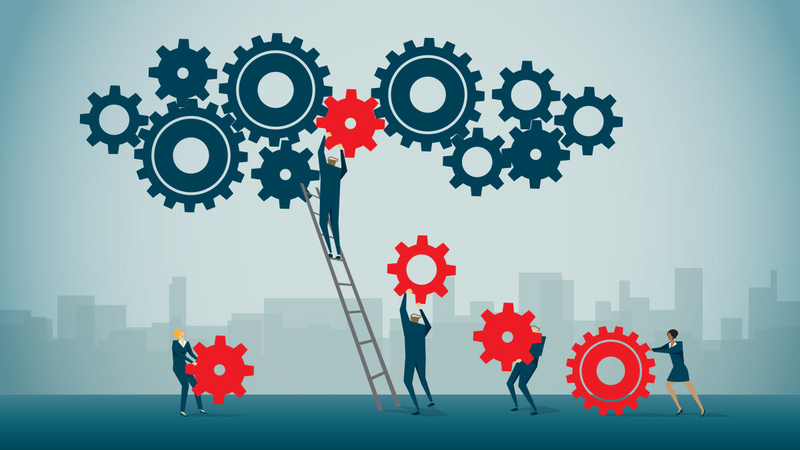ATD Blog
Creating a Lab Mindset
Wed Apr 01 2020

In Carol Dweck’s 2007 classic Mindset: The New Psychology of Success, she expounds on the differences between a growth mindset where people believe hard work and dedication contribute to continuous learning and reaches beyond the thinking that intelligence is a fixed trait. At its essence, having a growth mindset is about a way of thinking, believing, doing, and acting. In a similar vein of thinking, talent professionals can create experiences promoting a lab mindset.
What Is a Lab Mindset and Why Is It Important for Building Capability Within Your Workforce?
Just as you might suspect, a lab mindset is modeled after a science lab, a specific place with unique tools to test various hypotheses and experience what happens when various chemicals or substances work together. The physical space is designed for experimentation; thus, in this type of environment it is normal to be messy, to not succeed with the first iteration, and to have the freedom and the encouragement to explore various options with frequent trials.
In the learning space, the overarching aim of a lab atmosphere is to create an engaging and interactive environment for participants to connect, collaborate, and to share learning practices around a professional conundrum or a business challenge. This starts with piquing their curiosity and then, just like a science lab, using a disciplined framework with a structure built around tools, techniques, and methods to promote collaboration, experimentation, and sharing. And, like a science lab, this is not just doing the experiments per se; it is about reflecting on what happened, who did what, the lessons learned, and ideas for continuing to develop and use the learning in the follow-on experiments.
Why Is a Lab Mindset Important?
The norm for the current work environment in most industries is massive change and frequent transformations. Talent leaders play critical roles in enabling the capability-building necessary for their organizations’ conversions to be successful in realizing the projected results. This is no longer business as usual, and what worked yesterday will not work tomorrow. The task before talent leaders includes focusing on the organizational system, being tightly aligned with the changing business objectives, and frequently assessing the needs of the employees. Additionally, they need to be aware of all technologies available as well as a deep understanding of what others are doing related to these changing needs.
How Does One Practice Habits of a Lab Mindset?
Chase your curiosity—and build context and content around it to serve as a vehicle for delving deeper and deeper. This means starting where they are and working on issues that are relevant and important in their work and their world. It includes collaborating with a group of friendlies who have similar needs then collectively leveraging the ability of questions to stimulate the brain for further questions and sparking other ideas.
Explore an eclectic array of ideas and concepts: Exploration feeds and engenders curiosity. It happens through diverging around the questions one is curious about using research, benchmarking, and old-fashioned, informal discussions. Instead of circling the wagons and only viewing the internal status quo, it encourages learning about external information and novel ideas. It opens the arena to expose what is happening in other industries, in other companies within the same industry, and even to the options that are possible but not yet in place. It opens the opportunity for tolerating crazy ideas and mistakes. It also involves struggling with pros and cons of the variety of ideas that surface and extensive culling and distillation of this data. It involves looking at the data from different perspectives and then looking once again for patterns and themes.
Be a doer and a maker, and physically design rough and ready prototypes. Doing and making can be as simple as a diagram on the back of a napkin, a concept poster using found objects, or a building an object with cardboard and duct tape. Mash up examples and see if they work.
Learn continuously as a student and a teacher. A lab mindset is not just about diverging and exploring a problem or a project; it is about standing back and looking at the bigger picture to learn. It is about analyzing prototypes. This happens by iteratively reflecting, examining the ideas, synthesizing the plethora of topics, conversations, and assessing the products designed. It includes intentionally looking at the product developed from different perspectives by seeking and listening to feedback. It implies converging activities to look at how the dots connect. These sorting and sifting approaches contribute to associational thinking as well as new insights and ah-ha moments. But gaining insights from mining data and synthesizing patterns is not easy nor is it a magical process that just happens. Kelley and Kelley in Creative Confidence: Unleashing the Creative Power Within Us All suggests “thinking like a traveler” and to observe with a beginner’s mind by using fresh eyes for seeing the unfamiliar in the familiar.
Practice what John Spencer in his latest book calls “vintage innovation” or the “overlap of old ideas and strategies with new technology, contexts, and knowledge . . . using conventional materials in fresh ways.” (Vintage Innovation: Leveraging Retro Tools and Classic Ideas to Create Meaningful Learning, 2020, page 35). By keeping the essentials (the vintage) and adding the emerging and more modern innovations when appropriate, a lab mindset incorporates technologies but keeps the hands-on collaborative making and doing also.
How Do You Get Started?
You have already started the road to a lab mindset because you are constantly curious about things, whether it is your hobby, your family, your animal, or your health. When something piques your curiosity and makes you wonder about it, you ask yourself questions.
A lab mindset can be thought of as a new pair of glasses that provides a way to see the world and your situation with more clarity and understanding. The mindset opens you to a new adventure of discovery.
